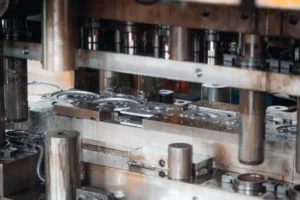Metal fabrication job shops are the Swiss Army knives of manufacturers. Projects may walk in the door that are as varied as imaginable from the ones coming in the day before. “You never know what you’ll be asked to make,” fabricators typically say. “You have to be prepared for anything.”
Certainly, metal fabricators competing with global manufacturers do not want to turn down a customer. More tools in the toolbox boost a manufacturer’s ability to handle whichever quantities, timetables, and part complexities are required. Fabricators that are also equipped with stamping capabilities—or vice versa—are well-positioned to handle nearly any request.
Need prototypes? We can do that. A short run of 200 by Tuesday? Sure. Then, once you finalize your design, a million parts three months from now? You bet. We can do all of those. No reason to go anywhere else.
But having that broad capacity poses another quandary: Which process path do you use? What indicates whether a job should be run on a stamping press or a laser and turret press or press brake?
Stamping or fabricating? How do you make that determination? Stamper/fabricator manufacturers ACE Stamping & Machine Co., Racine, Wis.; General Stamping & Metalworks (GSM), South Bend, Ind.; and Kapco Metal Stamping, Grafton, Wis., share their perspectives and approaches to this conundrum.
ACE Stamping & Machine Co. Vice President James Haarsma said, “How to determine which route to take is one of our biggest challenges. This is something that I battle every day.”
GSM President and CEO John Axelberg said, “When selecting the manufacturing method for a particular part, we try to propose the lowest-cost option, taking into consideration lead time to production and total volume over the product life cycle.”
Kapco Vice President Mike Kenny said, “For each part we look at annualized volume, geometry, size, features, tolerances, material, equipment requirements in tonnage and size, and our customer’s tooling ROI as the key decision points that drive which particular processes are deployed. Choosing fabrication, stamping, or some combination thereof is the result of identifying the most competent processes to yield consistent, defect-free parts at the lowest total cost.”
- Cost
Cost is the pivot point that all other factors revolve around. Manufacturers leverage each of the processes’ strengths to achieve cost efficiencies.
Kenny cites stamping’s capability to combine several operations in the press as one way it can tip the scales in its favor. “If there are opportunities to combine additional operations, such as fastening, tapping, extruding, coining, or part marking, in a stamping press stroke, often the reduction in part cost will offset the investment in stamping tooling and help drive the decision,” he said.
Read more: How metalworking manufacturers decide whether to fabricate or stamp








